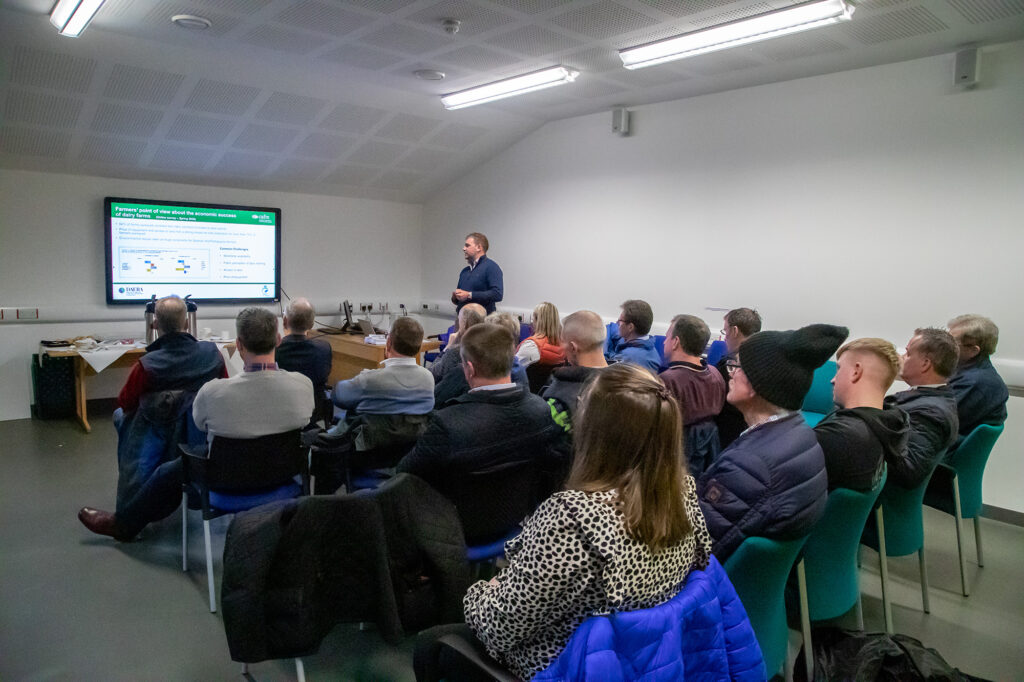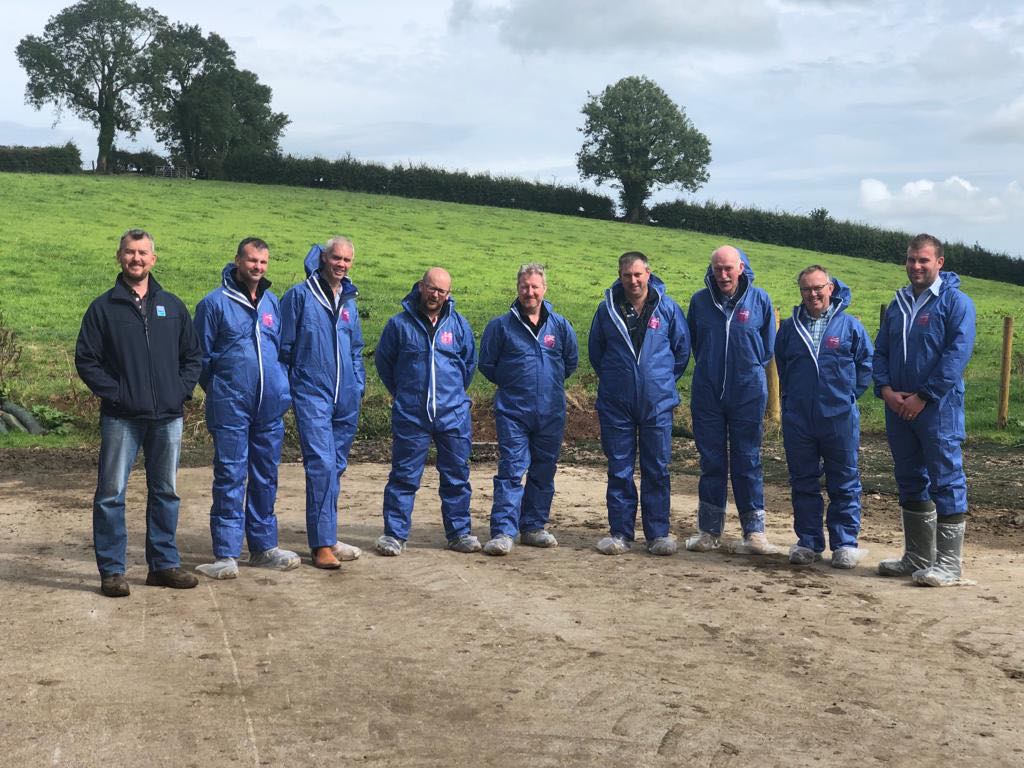Northern Ireland Pilot Dairy Farms Complete ‘Dairy 4 Future’ Project
February 22, 2023
A blueprint for low emission dairying, results from regional SWOT (strengths, weaknesses, opportunities and threats) analysis, farmers views on economic success and common challenges faced by dairy farms in the Atlantic region.
These were just some of the topics covered when Northern Ireland’s ten ‘Dairy 4 Future’ pilot farmers met at the College of Agriculture, Food and Rural Enterprise (CAFRE) Greenmount Campus. The visit was to mark the completion of the innovative and exciting Atlantic Interreg funded project, in which they have played a pivotal role over the past 4 years, stated CAFRE Dairying Technologist, Robert Patterson.
The Dairy 4 Future project was comprised of 12 Atlantic regions, from across 8 countries, including Northern Ireland, Scotland, England, Wales, Ireland, France, Spain and Portugal. The project was supported by 11 technical partners (local organisations involved include CAFRE, SRUC, AHDB and Teagasc) and was based on data from 100 pilot farms and 10 experimental farms.
The Atlantic area includes 80,000 dairy farms, employing 100,000 farmers and employees, employs a further 70,000 people in dairy companies and represents 23% of European milk production.
The aim of the Dairy 4 Future project was to increase the competitiveness, sustainability and resilience of dairy farms in the Atlantic area and focused on four key issues which were, analysing the strengths and weaknesses of the dairy sector in Atlantic Area, fostering dairy sector economic resilience, improving resource use efficiency and determining sustainable dairy systems for the future.
Ten of the 100 Pilot farms involved, were local farms here in N. Ireland, with the CAFRE dairy herd being the local demonstration farm. Each farm provided two years of detailed data on the physical and financial performance of their businesses, as well as allowing analysis on their environmental performance and aspects on social sustainability. All the farms received a detailed carbon benchmark and ammonia assessment for two consecutive years (2018 and 2019).
The Dairy 4 Future project gave the NI pilot farmers the opportunity to attend meetings on each other’s farms throughout the project. CAFRE’s Robert Patterson added: “These meetings were well attended, full of lively discussion and debate and were focused on topic areas specific to each farm. The farmers were also able to avail of trips further afield, including a visit to Brittany in 2019 and a visit to ROI in 2022.”
The project has produced a booklet entitled, ‘Lessons learnt from the Dairy 4 Future project’, which documents all of the studies carried out and includes the reports and findings. The key strength which was identified from the SWOT analysis across all of the regions was the optimum temperate climate with adequate precipitation to allow good grass growth. The main weakness was that the systems are sensitive to milk price volatility with low margins and thus creating difficulties in expansion. Global warming was identified as a major threat due to drought risk during the grass growing season and when considering opportunities, all North Atlantic regions with the exception of Brittany expect milk volume output to increase to 2030.


64% of the pilot farms said that their milk contract was favorable to their activity. When asked to give their views on the economic success of dairy farms the common challenges found were, workforce availability, public perception of dairy farming, access to land and the price of equipment. Over 70% of the farmers felt the price of equipment and access to land had a strong impact on their milk production.
A report detailing a blueprint roadmap for low emissions dairy farms in the Atlantic Area, found a significant difference in the % of replacement heifers carried on the farm, between farms with a high and low stocking rate. It also identified a significant difference in the carbon footprint of farms which had a high amount of purchased feed per kg of milk solids compared to farms with a low amount. Important factors identified for low emission dairy farms were, land availability, replacement heifer rate and precision farming practices.
The ‘Lessons learnt from the Dairy 4 Future project’ booklet can be found on the CAFRE website. www.cafre.ac.uk/business-support/agriculture/dairy/dairy-4-future/
CAFRE would like to thank again the ten NI Pilot farmers for their participation in the project, their willingness to provide information and their continued involvement and enthusiasm throughout the project.
